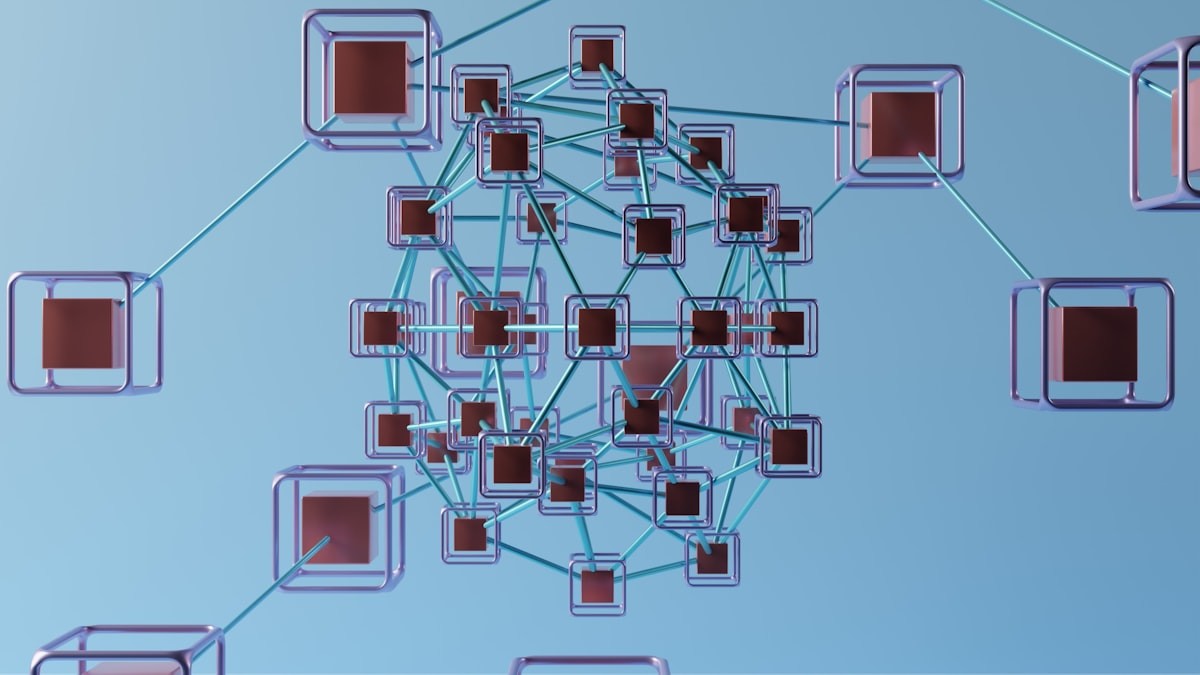AI Model vs API: Which Development Path is Right for You?
The world of Artificial Intelligence (AI) is rapidly evolving, offering businesses and developers unprecedented opportunities. However, navigating the AI landscape can be complex. A central question often arises: Should you build your own AI model vs API? This article delves into the intricacies of both approaches, providing the latest insights to help you make an informed decision. Choosing the right path depends on your specific needs, resources, and technical expertise. We'll explore the pros and cons of each approach, highlighting recent advancements and industry trends.
1. Understanding the Core Concepts

diagram
Before diving into the comparison, let's define the key terms:
- AI Model: A trained algorithm that can perform specific tasks, such as image recognition, natural language processing, or predictive analytics. Building your own model involves collecting data, training the algorithm, and deploying it.
- API (Application Programming Interface): A software intermediary that allows different applications to communicate with each other. In the context of AI, APIs provide access to pre-trained models and AI services, such as those offered by Google, Microsoft, and Amazon.
Recent Developments in AI Models
- Generative AI Explosion: The rise of large language models (LLMs) like GPT-4 and Gemini has revolutionized the AI landscape. While building these models from scratch requires immense resources, fine-tuning pre-trained LLMs for specific tasks is becoming increasingly accessible.
- Edge AI: Pushing AI processing to edge devices (e.g., smartphones, IoT devices) is gaining traction, reducing latency and improving privacy. This often involves optimizing existing models for resource-constrained environments.
- AutoML Platforms: Platforms like Google Cloud AutoML and Azure Machine Learning automate many aspects of model development, making it easier for non-experts to build custom AI models.
2. The Case for Building Your Own AI Model

diagram
Building your own model offers several advantages, particularly when dealing with highly specific or unique data.
- Customization and Control: You have complete control over the model's architecture, training data, and performance metrics. This allows you to tailor the model to your exact requirements.
- Data Privacy and Security: Keeping your data in-house can be crucial for organizations with strict privacy regulations or sensitive data.
- Competitive Advantage: A custom-built model can provide a unique competitive advantage by addressing niche use cases that off-the-shelf APIs don't cover.
- Intellectual Property: You own the model and its underlying intellectual property.
When Building Makes Sense
- Proprietary Data: You have access to unique or proprietary data that isn't available elsewhere.
- Specific Requirements: You need a model that performs a very specific task that existing APIs don't handle well.
- Long-Term Investment: You're willing to invest the time and resources required to build and maintain a high-quality model.
3. The Allure of AI APIs

a computer generated image of the letter a
Leveraging AI APIs offers a faster and more cost-effective way to integrate AI into your applications.
- Speed and Simplicity: APIs provide instant access to powerful AI models without the need for extensive development or training.
- Cost-Effectiveness: You only pay for the API calls you make, which can be significantly cheaper than building and maintaining your own model.
- Scalability: API providers handle the infrastructure and scaling, ensuring that your AI services can handle growing demand.
- Access to Expertise: You benefit from the expertise of the API provider's AI research and development teams.
API Advantages in Detail
- Rapid Prototyping: Quickly test and deploy AI-powered features without significant upfront investment.
- Reduced Maintenance: API providers handle model updates and maintenance, freeing up your team to focus on other tasks.
- Wide Range of Services: Access a diverse range of AI services, including natural language processing, computer vision, and machine translation.
4. Cost Comparison: Build vs. Buy
The cost of building an AI model can be substantial, including data acquisition, infrastructure, personnel, and ongoing maintenance. APIs, on the other hand, typically involve a pay-as-you-go pricing model.
- Building: Requires significant upfront investment in data, infrastructure (GPUs, cloud computing), and specialized personnel (data scientists, machine learning engineers).
- APIs: Offer a more predictable cost structure, with pricing based on usage (e.g., number of API calls, data volume). However, costs can escalate quickly with high usage.
Current Pricing Trends
- API Pricing Models: API pricing models vary widely. Some offer free tiers for limited usage, while others charge per API call, data volume, or feature. Be sure to carefully evaluate the pricing structure and estimate your usage to determine the most cost-effective option.
- Cloud Computing Costs: Cloud computing costs for training and deploying AI models have become more competitive, but still represent a significant expense for custom builds. Services like AWS SageMaker and Google Cloud AI Platform offer tools to optimize these costs.
5. Technical Expertise Required
Building your own AI model requires a deep understanding of machine learning algorithms, data science principles, and software engineering practices. APIs, on the other hand, can be used with minimal AI expertise.
- Building: Requires a team of data scientists, machine learning engineers, and software developers with expertise in areas such as data preparation, model training, evaluation, and deployment.
- APIs: Can be integrated into applications by developers with basic programming skills. No specialized AI knowledge is required.
The Rise of Low-Code/No-Code AI
- AutoML Platforms: Platforms like DataRobot and H2O.ai are making AI development more accessible to non-experts through automated machine learning (AutoML) capabilities. These platforms can automate many aspects of model building, reducing the need for specialized expertise.
- No-Code AI Tools: Emerging no-code AI tools allow users to build and deploy AI models without writing any code. These tools are ideal for simple use cases and rapid prototyping.
6. Data Considerations: Quantity and Quality
Data is the lifeblood of AI. Building a high-quality AI model requires a large and representative dataset. APIs, on the other hand, rely on pre-trained models that have been trained on massive datasets.
- Building: Requires a large and well-labeled dataset that accurately reflects the real-world scenarios in which the model will be used. Data preparation and cleaning can be a time-consuming and expensive process.
- APIs: Leverage pre-trained models that have been trained on vast datasets. This eliminates the need for data collection and preparation, but you may need to fine-tune the model for your specific use case.
Data Augmentation Techniques
- Synthetic Data Generation: Creating synthetic data using techniques like generative adversarial networks (GANs) can help augment existing datasets and improve model performance, especially when dealing with limited or imbalanced data.
- Transfer Learning: Leveraging pre-trained models and fine-tuning them on smaller datasets can significantly reduce the amount of data required to build a custom model.
7. Security and Compliance Implications
AI models can be vulnerable to various security threats, such as adversarial attacks and data poisoning. Building your own model allows you to implement robust security measures, while using APIs requires you to trust the security practices of the API provider.
- Building: Allows you to implement security measures such as data encryption, access control, and model validation to protect against threats.
- APIs: Requires you to trust the security practices of the API provider. Ensure that the provider complies with relevant security standards and regulations.
Addressing AI Security Risks
- Adversarial Training: Training models to be robust against adversarial attacks by exposing them to perturbed inputs during training.
- Differential Privacy: Techniques to protect the privacy of individuals in datasets used for training AI models.
8. Real-World Examples and Use Cases
Let's look at some real-world examples of when to build vs. buy:
- Build: A financial institution developing a fraud detection model using proprietary transaction data.
- API: A social media platform using a sentiment analysis API to monitor brand reputation.
Recent Success Stories
- Healthcare: Hospitals are using custom-built AI models to analyze medical images and improve diagnostic accuracy. These models are often trained on proprietary patient data.
- Retail: E-commerce companies are using AI APIs to personalize product recommendations and improve customer engagement. These APIs provide access to pre-trained models for natural language processing and computer vision.
Conclusion: Making the Right Choice
The decision of whether to build your own AI model vs API is a complex one that depends on your specific needs and resources. Building your own model offers greater customization and control, but requires significant investment in time, expertise, and infrastructure. APIs offer a faster and more cost-effective way to integrate AI into your applications, but may not be suitable for all use cases.
Consider your data availability, technical expertise, budget, and security requirements when making your decision. As AI technology continues to evolve, the lines between building and buying may blur, with new tools and platforms emerging that make it easier to customize and deploy AI models. Keep abreast of the latest trends and advancements to make informed decisions about your AI strategy. Consider starting with an API for rapid prototyping and then transitioning to a custom model if necessary. Ultimately, the best approach is the one that aligns with your business goals and provides the greatest value.
Call to action: Evaluate your project requirements and explore both custom AI model development and available API solutions. Start with a proof-of-concept using APIs to quickly validate your ideas before committing to a full-scale custom build.
FAQ
Q: What are the biggest challenges in building your own AI model?
A: Data acquisition and preparation, access to specialized talent, and high infrastructure costs are the main challenges. Also, staying current with the latest advancements in AI research is a constant effort.
Q: How do I choose the right AI API for my project?
A: Consider the API's accuracy, latency, pricing model, scalability, and security features. Also, research the API provider's reputation and track record.
Q: Is it possible to combine building my own model with using APIs?
A: Yes! Fine-tuning pre-trained models from APIs with your own data is a common approach. This allows you to leverage the power of pre-trained models while customizing them to your specific needs.
Q: What are the latest trends in AI model deployment?
A: Edge AI, serverless deployment, and model compression techniques are gaining traction. These trends aim to improve performance, reduce latency, and lower deployment costs.
Q: How can I stay up-to-date with the latest advancements in AI?
A: Follow leading AI researchers and organizations, attend industry conferences, read research papers, and participate in online communities. Also, explore platforms like ArXiv and conferences like NeurIPS and ICML for cutting-edge research.

